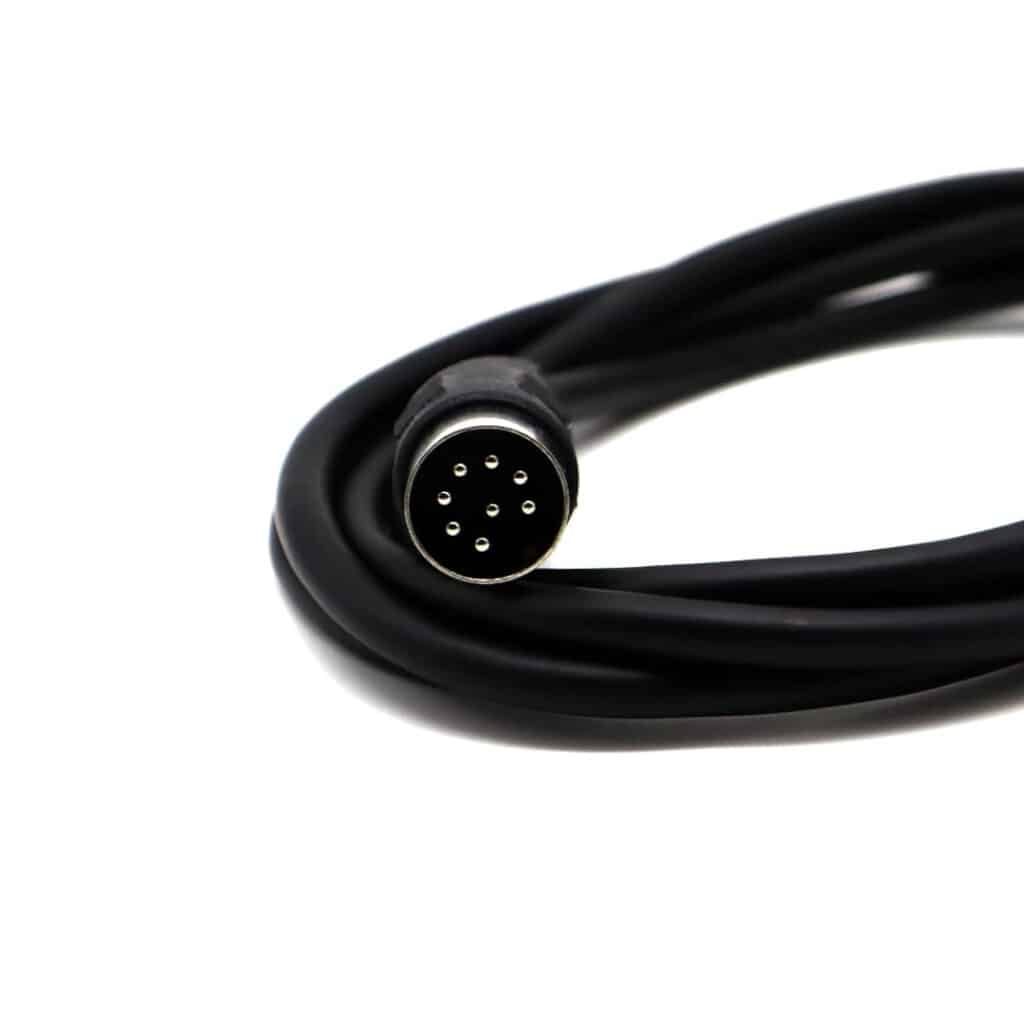Datalink was the first digital language developed by Bang & Olufsen and allowed various components of a music system to work in conjunction with each other. It used the addition of two extra pins to a standard 5-pin DIN plug via which a digital code was sent. It was a way whereby products could ‘talk to each other’. Datalink is the forerunner of Beolink®.

The DIN connector has two pins for control signals, one pin as an audio ‘common’, two pins for stereo ‘in’ and two more pins for stereo ‘out’. The control pins are referred to as Datalink pins and these carry signals to do the following:
* transfer program-location data to the primary component to show up on the primary unit’s console, two-way remote controls, display-equipped BeoLab speakers or Beovision TVs that are installed in other rooms and part of their Beolink ‘multi-room’ audio-video infrastructure
* ‘open up’ the audio inputs on the Beomaster or BeoCenter if the local ‘PLAY’ key is pressed on the unit
* accept control signals to control the device from either the primary unit or a remote control
The original idea was seen in a prototype system called Beosystem 6000 which comprised a stereo receiver, stereo tangential tracking turntable and an advanced auto reverse reel to reel tape recorder. This system was never put into production but styling cues from the Beomaster led to the Beomaster 6000 quad receiver, the record player became the Beogram 4000 but the Beocord was dropped after only 6 examples were made. The idea of each component being able to talk to each other was postulated but no system was put into production based on this design.
The first production model with any type of link system was the Beomaster 2400 which, when connected to a Beogram 4004, allowed remote control of the Beogram via an ultrasonic remote control. Unlike previous systems, all the major controls on the Beogram and the Beomaster were electronic and hence suitable for remote operation. The system was later to include a radial Beogram as well, the Beogram 2402. This system however was a one off and was incompatible with later versions of Datalink. The Beogram and receiver were connected via a captive 7-pin lead on the Beogram.
Datalink first was seen in its full glory in the BeoLab 8000 system in 1981. Unlike the earlier system, full remote control of all the different sources was now possible, with play, record, cueing, programme selection and volume control all possible at the press of a single button on an infra red remote control. The system also allowed one to press a start button on any of the sources which would switch on the Beomaster or vice versa. All the sources were attached to the Beomaster by 7-pin DIN leads. An important point was that the Beomaster remained the hub of the system with all commands from the remote control travelling via the infra red receiver on the Beomaster and Datalink being the messenger to the source.
The system was refined over the years and eventually allowed all functions to be controlled remotely as seen in the Beosystem 7000. These days, the system has fallen into disuse but the language continues in a different guise as MasterLink. No longer speaking between components in a single audio system, MasterLink connects systems together. Older systems can still communicate with the aid of the 1611 converter which translates Datalink to the newer codes.
* Datalink communication in the Beogram 6000/6002 is one-way, which means that pressing /PLAY/ on Beogram 6000/6002 will not start the Beomaster/Beocenter
** Beomaster 2000 cannot be operated by remote control
*** Beocord 5500/6500/7000 have some special functions, for example tape counter and adjustment of recording level via remote control, which can be only operated with Beomaster 5500 and MCP5500